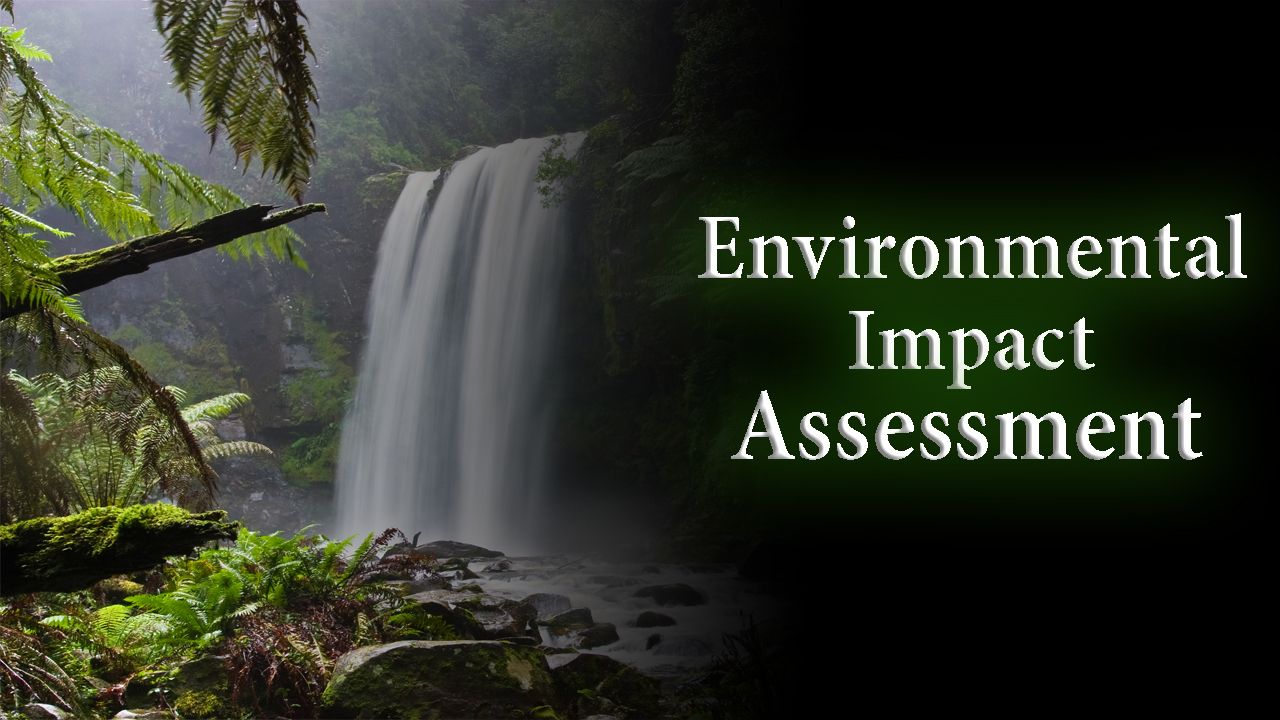Here, you will understand the purpose of the Environment Impact Assessment. Let us know what is EIA (Environment Impact Assessment)?
EIA is the assessment and evaluation of the environmental effects of proposed human activities. These developmental activities will have matriculation impacts on the environment.
The impact is not only on the physical environment but also on the cultural environment. The main core value of EIA is with the three components Integrity, Utility, and Sustainability.
India is a fast developing country, every year economic planning takes place but the problem lies with implementation because environmental protection should be our first duty to save it for the future generation, hence the projects and plans get delayed because it has to get clearance from Environmental Impact Assessment before starting.
Environmental Impact Assessment Importance in India
a) As a developing economy, India is always concerned with accelerating the development. This may lead to a rapid rate of exploitation of resources, as well as indiscriminate exploitation.
Therefore, many resources come under serious stress and certain resources may get exhausted.
Example:
- Water crisis may occur in rural and urban areas.
- Decline in forest cover from 51% in (1950-1951) to 23% in (2010-2011).
- The fishing potential may get suffered.
b) Developmental projects were executed without proper evaluation of their impact in the past, which posed a severe threat to environmental functions.
c) When an impact is identified, the development of alternatives to avoid or mitigate the impact is one of the main ways in which the EIA protects the environment.
Possible alternatives could be to redefine the project area around sensitive areas, use technology to minimize impacts, plant vegetation to stabilize disturbed soils, or completely abandon the proposed project.
d) India is a tropical country with rich biodiversity. India is one of few mega biodiversity countries in the world, to conserve the same for our future generation EIA plays a vital role.
e) India has a large population which is rising at a rapid rate. This huge population puts intense pressure on the available resources. Hence EIA’s significance has increased.
Principles of Environmental Impact Assessment
1) To examine the developmental alternative of the proposed project to achieve the same development objective with minimum damage to the environment.
2) Relationship between the short term uses of environment and maintenance of long term productivity and sustainability of the environment to be clearly understood.
3) EIA acknowledges the fact that all proposed activities will have some adverse impact on the environment and EIA tries to minimize these adverse impacts.
Here, strategies will be developed to mitigate the adverse impact of the proposed action.
4) EIA will have proposals for long term improvement of the environment, with acknowledging the fact that development is inevitable.
5) EIA includes environmental management.
6) To declare national policy in order to ensure a productive relationship between human beings and the environment.
Objectives of Environment Impact Assessment
- To maintain the balance between natural resources with human needs without harming the environment.
- To Verify that the impacts are within the planned or authorized limits.
- It Presents the predictions and options for decision-makers.
- It acts as a mediator between Government and public informing about the proposals.
Process of Environmental Impact Assessment in India
The Environmental Impact Assessment (EIA) is a scientific tool that guarantees sustainable development and helps to assess the impacts of a project activity that can have significant environmental effects but also to implement mitigation measures.
Of a proactive, participatory and systematic nature, it is based on a multidisciplinary contribution. The environmental evaluation allows us to perform a cost-benefit analysis for the environment of the projects in the initial stage.
Therefore, it is a prerequisite for a detailed analysis of environmental impacts, which is necessary to decide whether or not to start the project.
In India, the EIA process is quite effective since the Ministry of Environment and Forestry (MEF) has taken many good initiatives, including:
a) Establishment of sectorial Expert Appraisal Committees.
b) Committees and Authorities established at the state level.
c) Regular and long meetings of the Central Empowered Committee (CEC).
d) View project reports, status, and duration on the website
e) Publication of administrative instructions for the sake of clarity and uniformity in the implementation of the EIA Notification.
f) Program launched for the accreditation of consultants through the Quality Council of India, which can only perform the EIA process for specific sectors.
g) Provision of an environmental management plan: Optimize the use of resources, Minimization of emissions and generation of waste, Recycling and Reuse of waste, promote energy efficiency, Address social issues.
Post-clearance environmental monitoring to ensure that project proponents have taken action in accordance with the conditions specified in the EC letter.
The monitoring reports received from the regional offices are reviewed by the ministry. Quantitative monitoring of air and water pollution by central/national pollution control boards.
One of the important provisions of the Environmental Impact Assessment process is the participation of the affected local people and their opinions on the activity of the project, which makes the process more authentic.
In addition, the participation of the National Green Court in the EIA process serves as a means to monitor the implementation of the EIA process.
Steps in Environmental Impact Assessment Process
Before knowing the steps we have to know based on what components this Environmental Impact Assessment is made right? EIA Report should contain the following whole or partial components depending on the projects as mentioned.
- Air Environment
- Noise Environment
- Water Environment
- Biological Environment
- Land Environment
- Socio‑economic and Health Environment
- Risk Assessment
Finally, the Environment Management Plan will be prepared and should make the public aware of the locality of the project and given the opportunity to give suggestions for the State Pollution Control Board under Schedule IV of Annex I.
The Environmental Impact Assessment Steps as follows:
(i) Registration of the project:
The developer registers the project in the nearest Department of Environmental Affairs office (DEA) of the project location.
A specific project summary form should be filled and has to give in hard copy. The DEA responds to the project summary within two weeks and indicates the required level of environmental assessment needed.
(ii) Screening:
At this stage, the EIA Agency determines whether the project can proceed as planned or it requires partial or complete modification.
EIA Agency involves the public and other agencies to determine the requirements for further study.
(iii) Scoping:
It is also a preliminary planning phase. This is a more detailed study plan for the project, whose objective is to identify the main concerns and impacts and to choose the evaluation methods and the models to be used.
(iv) Baseline Data Collection:
Data collection from the base is very crucial because it guides and gives us more practical inputs rather than theoretically, which helps in project planning. And for International funded projects it may take a longer time.
(v) Identification of Impact:
Prediction and impact evaluation are the most important parts of the technical process. This objective can be achieved through the use of appropriate models and a careful assessment of the inputs and outputs.
(vi) Alternative Evaluation Criteria:
They include legally binding criteria, technical/scientific criteria and criteria of social acceptability. Alternative sites and the design process should be critically examined to maximize positive environmental impacts, socioeconomic benefits, profitability and minimize the damages that may cause.
(vii) Risk assessment:
The inventory and probability analysis and the risk index are also part of the EIA procedures.
(vii) Management Plan:
There will be many phases of the project which will be monitored closely and take necessary actions at the appropriate time.
This is the final document of the EIA that will review the impacts, evaluate the consequences, identify mitigation measures and prepare an environmental management plan for the implementation of mitigation and monitoring measures. Initial closure and rehabilitation plans are required.
(viii) Approval:
Once the EIA completes, the document is sent to the DEA for approval. The legal term for this process is 60 days. In complex projects, this review rarely lasts up to 90 days.
(viii) Public Hearing:
At the end of the Environmental Impact Assessment report, public and environmental groups living near the project site will be informed and consulted to collect any objections and suggestions, this may last for 8-12 weeks.
Taking public any other agency’s opinions and concerns the EIA decides the implementation process of the project, place, alternatives, etc.
Projects of EIA Consists as Follows
Thermal Power plant, Petroleum Refineries including crude and product pipelines, harbors and airports, River valley projects, Nuclear and water power plants, chemical fertilizers and pesticides, drugs and pharmaceuticals, Oil and Gas related functions, Mining, batteries waste management and storage, tourism projects, Highway projects, Tarred Roads in Forest and Himalayas, etc..
These are the sectors that have to take Environmental Clearance before starting the project, it may be private or public the rule applies the same under schedule 1 of notifications.
Conclusion:
In India, along with abundant resources available, even the population growth is dramatically high, hence it is the must-have the Environmental Impact Assessment in order to save the environment as well as fulfilling the needs of the people without harming the environment.












